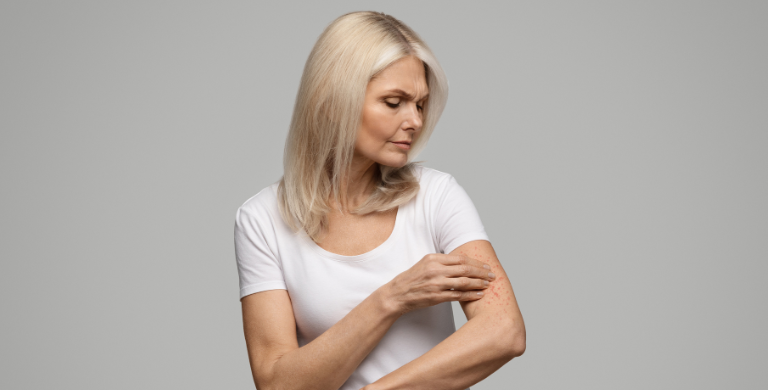Learn about ringworm, including its causes, symptoms, treatment, and how to prevent this common fungal infection. Protect yourself and your loved ones with these tips.
Understanding ringworm
Ringworm is a common fungal infection that affects the skin, scalp, feet, or nails. Despite its name, it has nothing to do with worms. The infection gets its name from the ring-shaped rash that often appears on the skin, which is typically red and itchy. This condition can affect anyone, though it is particularly prevalent in children and those who have close contact with infected individuals or animals. Understanding the signs, knowing how to treat, and prevent ringworm is crucial for managing this contagious condition.
What is ringworm?
Ringworm is caused by a type of fungus that lives on the dead tissues of your skin, hair, and nails. The infection spreads through direct contact with an infected person, animal, or object. It can also be contracted from soil that harbours the fungus. The infection is highly contagious, making early detection, treatment, and prevention essential to avoid its spread.
Types of ringworm
Ringworm can develop on different parts of the body, each with its own specific name depending on the affected area. This fungal infection can appear almost anywhere, leading to various forms:
- Athlete’s foot (tinea pedis): This type of ringworm affects the feet, particularly between the toes and on the soles. It often leads to itching, burning, and a scaly rash. The skin may crack, develop blisters, and sometimes, the feet can emit an unpleasant odour.
- Jock itch (tinea cruris): Occurring in the groin area, upper thighs, and sometimes around the rectum, jock itch presents as a red, itchy rash. In some cases, blisters may form.
- Scalp ringworm (tinea capitis): This form of ringworm affects the scalp, leading to scaly, red, and itchy bald patches. If not treated, these bald areas can expand and potentially become permanent.
- Hand ringworm (tinea manuum): When ringworm affects the hands, it often causes dry, cracked skin on the palms along with ring-shaped patches.
- Beard ringworm (tinea barbae): This type appears on areas of the face covered by a beard, such as the neck, chin, and cheeks. The infected areas may become crusty or filled with pus.
- Nail ringworm (tinea unguium or onychomycosis): Ringworm can also affect the toenails or fingernails, causing them to thicken, discolour, and become misshapen.
Symptoms of ringworm
Recognising the symptoms of ringworm can help you seek treatment early. Some of the most common symptoms include:
- A red, circular rash with a raised edge.
- Itching, which can be severe.
- Patches of hair loss if the scalp is affected.
- Cracked, scaly skin.
How is ringworm diagnosed?
If you suspect you have ringworm, it’s important to see a healthcare provider for an accurate diagnosis. Typically, a doctor will examine the affected area and may take a skin scraping to view under a microscope. In some cases, a Wood’s lamp (a special type of ultraviolet light) is used to detect the fungus. An accurate diagnosis ensures that the correct treatment plan is followed.
Treatment options for ringworm
The good news is that ringworm is treatable. The treatment usually depends on the location and severity of the infection.
Here’s what your treatment might include:
- Topical antifungal creams. Most cases of ringworm on the skin can be treated with over-the-counter or prescription antifungal creams, lotions, or powders.
- Oral antifungal medications. For more severe infections, especially those on the scalp or nails, your doctor might prescribe oral antifungal drugs.
- Keeping the area clean and dry. Fungus thrives in moist environments, so keeping the affected area clean and dry is crucial for effective treatment.
If you stop treatment or treatment ends too soon, the infection can return.
How to prevent ringworm
Prevention is key to avoiding the spread of ringworm. Here are some effective ways to protect yourself and others:
- Practice good hygiene. Wash your hands regularly, especially after touching pets or soil.
- Avoid sharing personal items. Do not share towels, clothes, hairbrushes, or sports gear with others.
- Keep your skin clean and dry. Fungi thrive in moist environments, so make sure to dry your skin thoroughly after bathing or sweating.
- Wear protective footwear in public areas. Use flip-flops or shower shoes in locker rooms, pools, and public showers.
- Check your pets. Animals can carry ringworm, so regularly check your pets for signs of infection and take them to the vet if you notice any suspicious spots.
- Clean and disinfect. Regularly clean and disinfect common areas, especially if someone in your household has been infected.
Special considerations
While ringworm is not usually serious, there are some special considerations to keep in mind:
- Prevention. To prevent ringworm, avoid sharing personal items like towels, clothes, or hairbrushes. If you have pets, make sure they are also checked for ringworm as they can transmit the fungus to humans.
- Follow the treatment plan. It’s important to follow your doctor’s treatment plan carefully, even if symptoms start to improve. Stopping treatment too soon can lead to a recurrence of the infection.
- Seek medical advice if symptoms persist. If your symptoms don’t improve with treatment, or if they worsen, consult your healthcare provider for further guidance.
Sources:
Cleveland Clinic: https://my.clevelandclinic.org/health/diseases/4560-ringworm
Healthline: https://www.healthline.com/health/ringworm
Mayo Clinic: https://www.mayoclinic.org/diseases-conditions/ringworm-body/symptoms-causes/syc-20353780
University of Dentists: https://utknoxvilledentists.com/the-effects-of-a-calcium-deficiency-on-your-oral-health/












